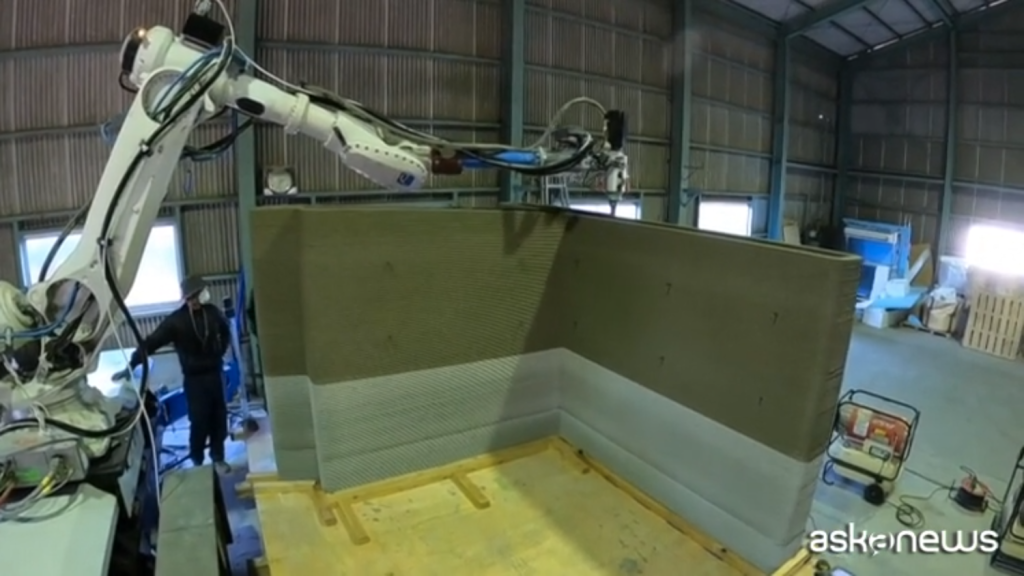In an impressive leap towards futuristic construction, Japan has inaugurated the world’s first 3D-printed train station in Arida, a city in the Wakayama Prefecture. This innovative project, helmed by Serendix Corporation in collaboration with West Japan Railway Company (JR West), marks a groundbreaking achievement in rapid urban development.
A Construction Marvel in Seven Days
The new Hatsushima station, with its sleek white structure and curved roof, stands at 2.6 meters tall and 6.3 meters wide. Remarkably, the foundational and exterior work of the station was completed within just seven days, showcasing the project’s efficiency and the potential for 3D printing technology in large-scale construction. The method employed a state-of-the-art 3D construction printer equipped with a robotic arm and a specially formulated mortar, allowing for precise and rapid production.
Compared to traditional construction methods, which take one to two months just to erect a roof and walls, this 3D-printed station offers a glimpse into a faster future for infrastructure projects. The assembly was briskly executed after the last train departed from Arida station at midnight, finishing before the arrival of the morning’s first train around 5 AM, emphasizing the technology’s ability to minimize disruption in active transit environments.
The Unique Advantages of 3D Printing
The speed and precision of 3D printing present significant advantages in the construction industry, reducing labor costs and material waste, while enhancing sustainability. For the station in Arida, each component was reinforced with steel and filled with concrete, ensuring structural integrity essential for enduring public use. Such attributes make it a viable technique for future urban developments seeking to balance time efficiency with quality.
Aesthetically, the station is also a nod to local culture with a circular design resembling the mikan orange, which is a specialty of the region. This integration of cultural elements illustrates how modern architecture can retain cultural relevance, harmonizing cutting-edge technology with traditional motifs.
Looking Forward: The Future of Infrastructure
As Arida leads the charge in novel construction methods, this station signals a shift towards adopting 3D printing in public infrastructure worldwide. The implications for urban planning are substantial, suggesting a future where new schools, hospitals, or transit centers could be erected in weeks rather than months.
Japan’s leadership in this endeavor is likely to inspire global interest, prompting cities worldwide to reconsider their infrastructure development strategies. As more projects adopt 3D printing technologies, there lies potential for a revolution in sustainable construction practices, reducing carbon footprints and enhancing quality of life in growing urban areas.
While the Hatsushima station may be Japan’s first venture into 3D-printed infrastructure, it almost certainly will not be its last. The success of this project paves the way for continued exploration and innovation in creating the cities of tomorrow.
